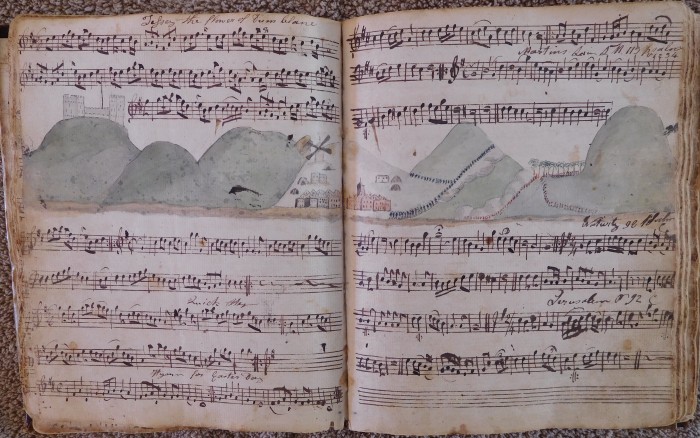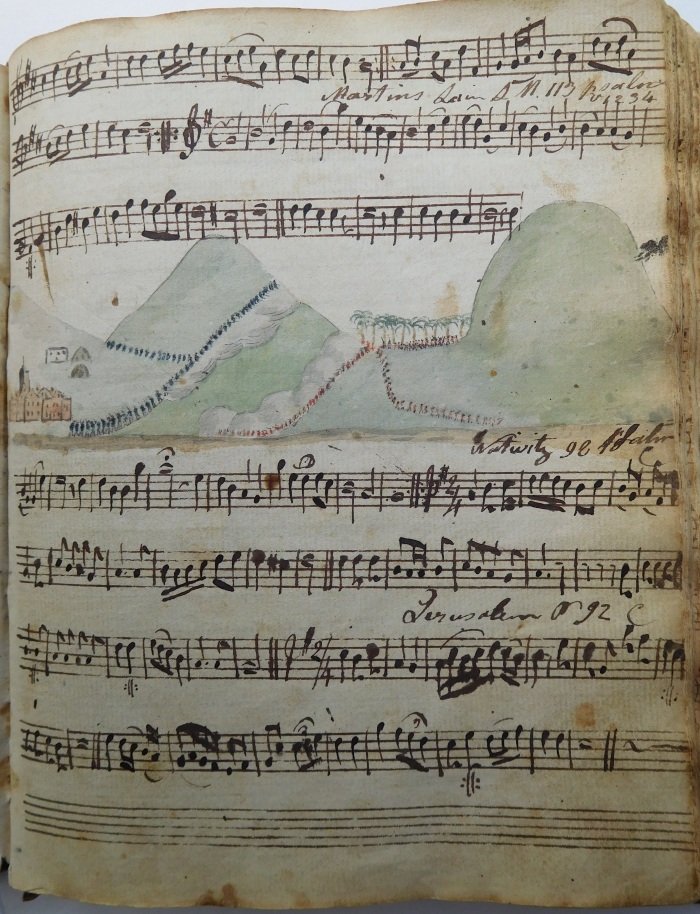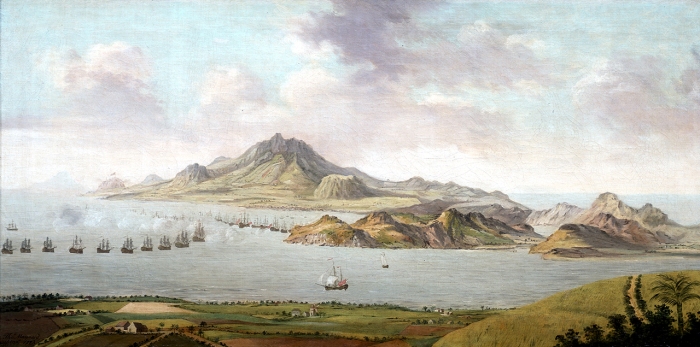Buttrey Manuscript Page 51 & 52
Fortress Brimstone Hill on the left;
French & English Troops on the right.

Left Side of Drawing of Battle of St. Kitts
“Jefsey the flower of Dum blane”
“Quick Step”
“Hymn for Easter Day”
Right Side of Drawing of Battle of St. Kitts

“Martins Lain SN 113 psalm v 1 2 3 4”
“Nativity 98 Pfalm”
“Jerusalum No 92″
– – – – – – – – – – – – – – – – – –
Further Info On Battle of St. Kitts
1) Painting by Thomas Maynard
Repulse of the French in Frigate Bay, St Kitts, 26 January 1782,
oil on canvas by Thomas Maynard – Public Domain

2) Wikipedia – Battle of St. Kitts
On 24 January, 22 British warships under Admiral Hood were sighted near Nevis inteing to reinforce Saint Kitts. De Grasse went out to intercept then, but by dawn the next day Hood had veered towards Montserrat, and contrary east-southeast winds impeded the French from reaching the British before they had circled north around Nevis and dropped anchor off Basseterre. De Grasse attacked the anchored British fleet on both the morning and afternoon of 26 January, but was beaten off, disembarkation proceeding apace. During these naval engagements, the French suffered 107 killed and 207 wounded, compared to 72 dead and 244 injured for the British. On 28 January, the 1,200-man British vanguard advanced against the town of Basseterre under General Prescott, while its French occupiers fought a delaying action under Colonel de Fléchin with 274 men of the regiments of Agenois and Touraine until the Marquis de Bouillé could hasten reinforcements across the island.
Prescott’s drive was eventually repelled, but otherwise French efforts continued to be hampered by the loss of their field artillery in a wreck while approaching Saint Kitts and the capture of an ammunition ship by one of Hood’s frigates. The governor sent artillery and ammunition to Fraser which were intercepted by the inhabitants, and by them deliberately made over to the French. Defending the fort at Brimstone Hill were the 1st Battalion of the 1st Foot (approximately 700), flank companies of the 15th Foot (approximately 120), Royal Artillery detachment, and many militia. By 12 February, Fraser’s little garrison, having lost over 150 killed and wounded, besides many men out of action through sickness, was exhausted. Additionally, there were breaches in the walls, and many of the militia petitioned to surrender. Fraser had no alternative but to negotiate a surrender, which included marching out with the honors or war. The next day, de Grasse ventured to Nevis to meet an arriving convoy of French victuallers, while Hood availed himself of the opportunity to escape in the opposite direction on the morning of 14 February.nd
